Perched in a coastal – mostly reclaimed – neighbourhood in Karachi, the Jehangir Kothari Promenade stretches over a recently constructed, shortly abandoned, nearly occupied, and narrowly ‘recovered’ Bagh Ibne Qasim. The sprawling park is a microcosm of the city’s political ecology. Its history is coloured by intrusive development and privations issuing from alleged collaborations between corporate, political, and bureaucratic bosses.
On 26th October, after nearly half a decade of disuse and ungreening, Karachi’s mayor reopened the bagh (park) for the public during the inauguration of Karachi Biennale 2019 (KB19). Ambitious in scale, this second iteration of “Pakistan’s largest international contemporary art event” boasted 89 projects by 98 artists. Curator, Muhammad Zeeshan and co-curators, Rabia Ali and Noor Ahmed, used the bagh and six other venues – IVS Gallery, Alliance Française, Frere Hall, VM Gallery, NED University City Campus, and Karachi Zoo – as spaces to create a visual narrative around their thematic lament, “Flight Interrupted: Eco-Leaks from the Invasion Desk.”

The CEO, Niilofur Farrukh, acknowledged that critiques of relevance and accessibility drawn by the previous biennale shaped the trust’s affinity for Zeeshan and his proposed theme. “Issues of Climate Change have,” she said, “been important to global discourse for several years.” With their new curator and theme, KBT thus hoped to establish a “proximity to the city and its people” and to stir discourse about how “their cultural ethos and sociological and socioeconomic realities” relate to global contexts.
The utility of ‘eco-art’ is, nonetheless, debatable. Some, like art historian, T.J. Demos, are optimistic that contemporary art can, with its “potential to both rethink politics and politicise art’s relation to ecology,” furnish to environmentalism Eschewing an “environmentalism of affluence” and a decolonising of lens and methodology are, however, important first steps. Sceptics like the ecologist Martin Spray, draw attention to the limitations of contemporary art. Spray, among others, posits that environmental art is largely “tenuous” and “embarrassingly hyped.” Oblique in its expression, unorthodox in its aesthetic, and irregular in its materiality and form, contemporary art is too alienating to successfully communicate the urgency of environmentalism.
Their dissent is an important reminder of factors that limit contemporary art’s ability to position itself as a vehicle of public discourse, leave alone change. This is especially true in Pakistan where ‘fine art’ has been infamously confined to elite galleries and opulent drawing rooms.
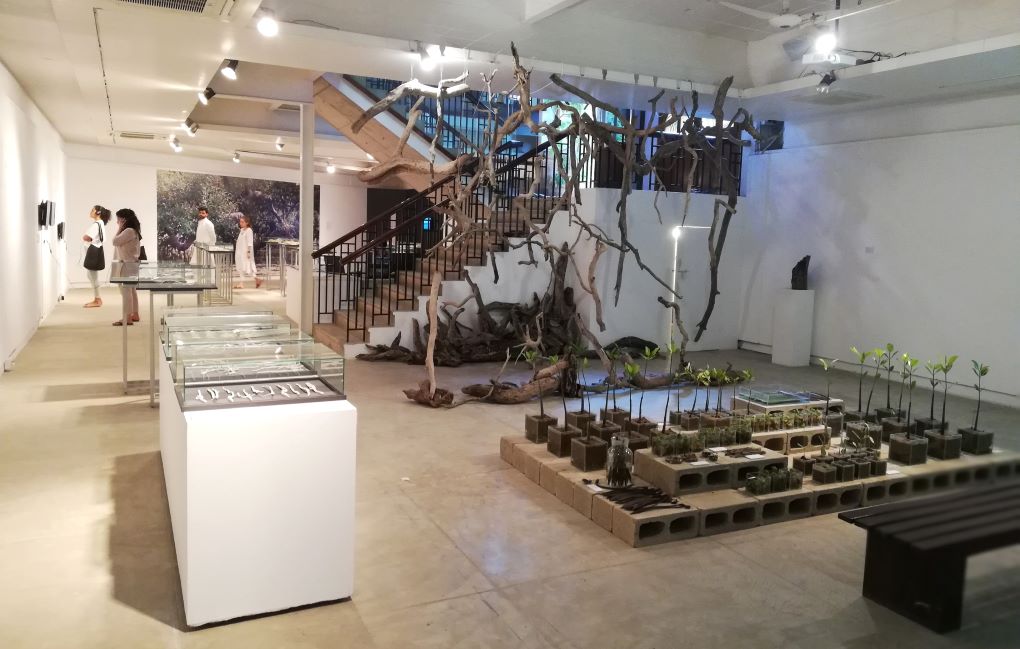
A sprawling line-map marked Karachi’s mangrove forests, high-definition photos and videos showcased their majestic dynamism, and a video series documented how their destruction impacts local communities and ecosystems. A passage constructed from found bark, detailed drawings of economically viable species, delicate porcelain plant studies, and fabric dyed in pigments obtained from mangrove trees testified to the legion of aesthetic possibilities that these endangered ecosystems contain.
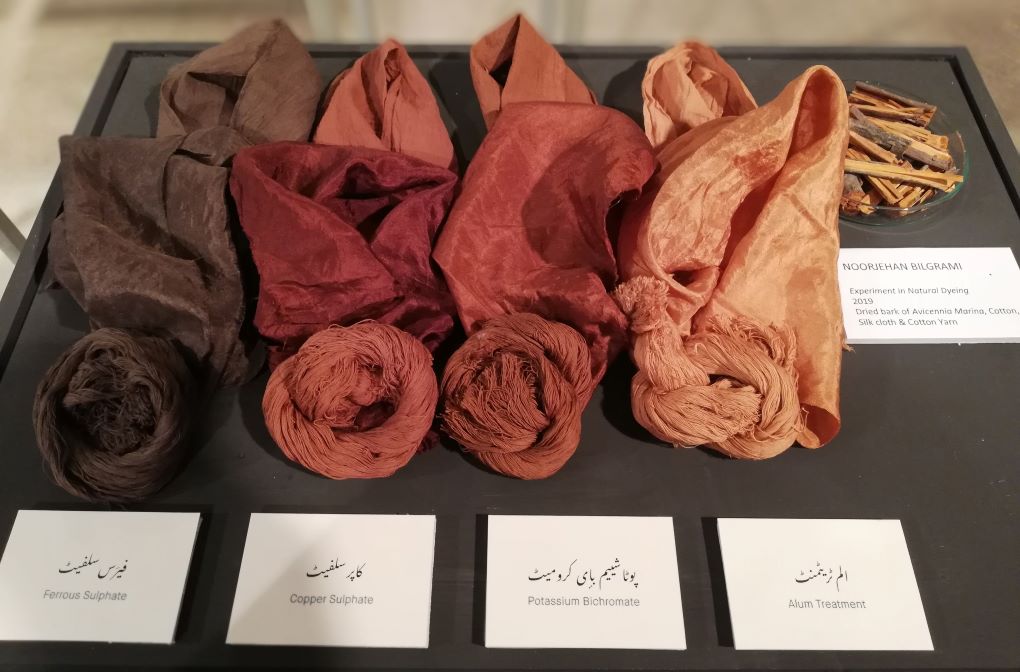
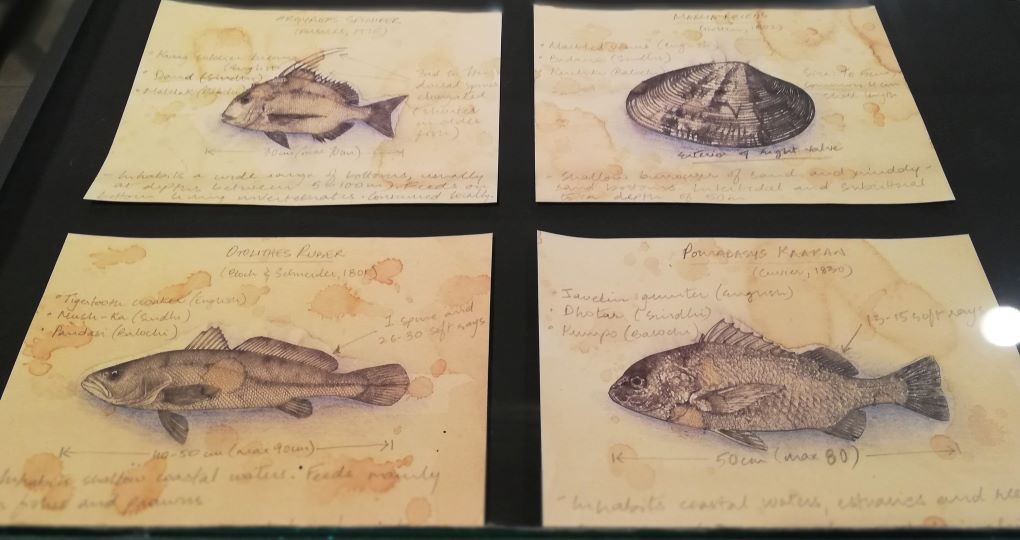

VM Gallery suffered for a lack of coherence, although Libby Hague’s On the Wondrous Sea delivered an impact. Simple in its motifs, accessible in its form, and urgent in its expression, the mural illustrating the widespread displacement of humans from the very landscape they have annihilated carried the potential to captivate young children and adults alike.

KB19 organisers seemed aware of their need to forego a passive deference to the power of art and assumptions about the universality of their message. The goal they claimed was: “to go to the people, not make them come to us.” Choosing the Zoo, which is among Karachi’ most frequented public places, with a high footfall of children, was a step in that direction.
Considering the need for a decolonised lens, which KB itself recognises, it is difficult to overlook the zoo’s inherent status as a place of exoticism. It is not simply a matter of their colonial origins as sites where “places, animals, and people were ordered through a Western lens;” zoos perpetuate acceptance for a chauvinism that allows powerful human beings to desecrate ecosystems. No matter how decolonised the language of its marketing or progressive its design, the zoo is inescapably a site through which children are trained to treat animals as ‘objects’ of their ‘gaze’—entertaining, educational, unusual.
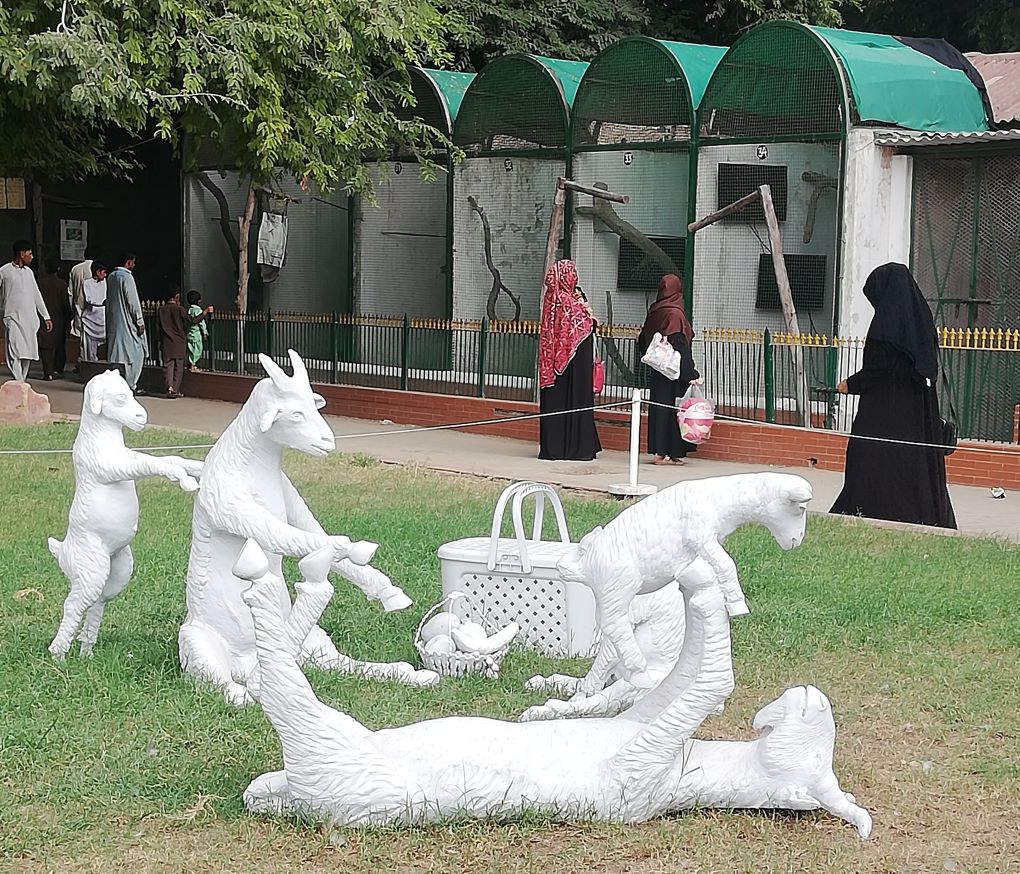
The biennale has made interesting choices that spotlight its position within Karachi’s political ecology. Opening with the “reactivation” of the bagh and placing nearly half of KB19’s works there is such a choice, specifically because of the governmental support it required.
This proximity to power became uncomfortable when they implicitly defended the government’s attempt to quash Adeela Suleman’s politicised interpretation of ecology, which led to the sealing of exhibits at Frere Hall. Events unfolding from Suleman’s indictment of the powers behind “[our] city’s mercurial landscape” revealed that substantive debate about the city, its environment, and its political ecology remains limited by hesitations to challenge its most powerful stakeholders.

Offering a sweeping spectacle across the promenade, R.M. Naeem’s Open to the Sky, also elicited multiple interpretations. A row of fibre-glass heads and bodies composed of chillies seemed like a mass grave of scorched bodies. A closer look at differently positioned heads and the varied shapes and sizes of bodies then implied how complicity can differ based on privilege and power. The artist associated his work with symbols, which, in his words, “represent powerful sources that have the capacity to shape our world, our environment, and even our minds.”

While concluding my visit to the bagh, which I long lived beside but could not enter, I paused to question whether the professed optimism of its reactivation sufficed to blur the contradictions of Karachi’s ecology, of the park’s contentious grounds, and of KB19 itself. Thunberg’s words while rejecting the Nordic Council’s environmental award propose a possible answer. She reminded the world about the perils of “beautiful words” and the perniciousness of the pretty picture. And, thus reinforced that the climate movement requires recognition of scientific consensus and concerted institutional action, as opposed to self-laudatory celebrations.
![<p>Qinza Najam’s installation “Don’t Grow Up, It’s a Trap” at the Karachi Zoo [image by: Umme Hani Imani]</p>](https://dialogue.earth/content/uploads/2019/11/Dont-Grow-up-Karachi.jpg)

![Chief Minister Hafiz Hafeezur Rehman of Gilgit-Baltistan talks to reporters [image by: Peer Muhammad]](https://dialogue.earth/content/uploads/2019/11/IMG_20191120_174847-1-300x295.jpg)
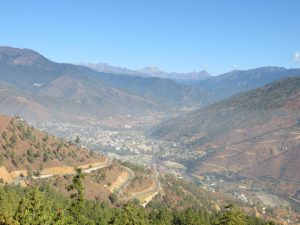

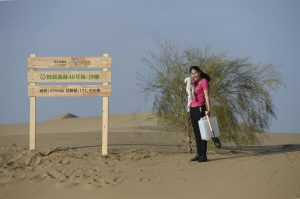
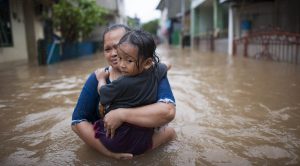
![Emaan Danish Khan is now a familiar face at climate talks in Pakistan, the youngest climate activist in the country [image by: Zofeen T. Ebrahim]](https://dialogue.earth/content/uploads/2019/11/IMG_2711-1-300x255.jpg)
